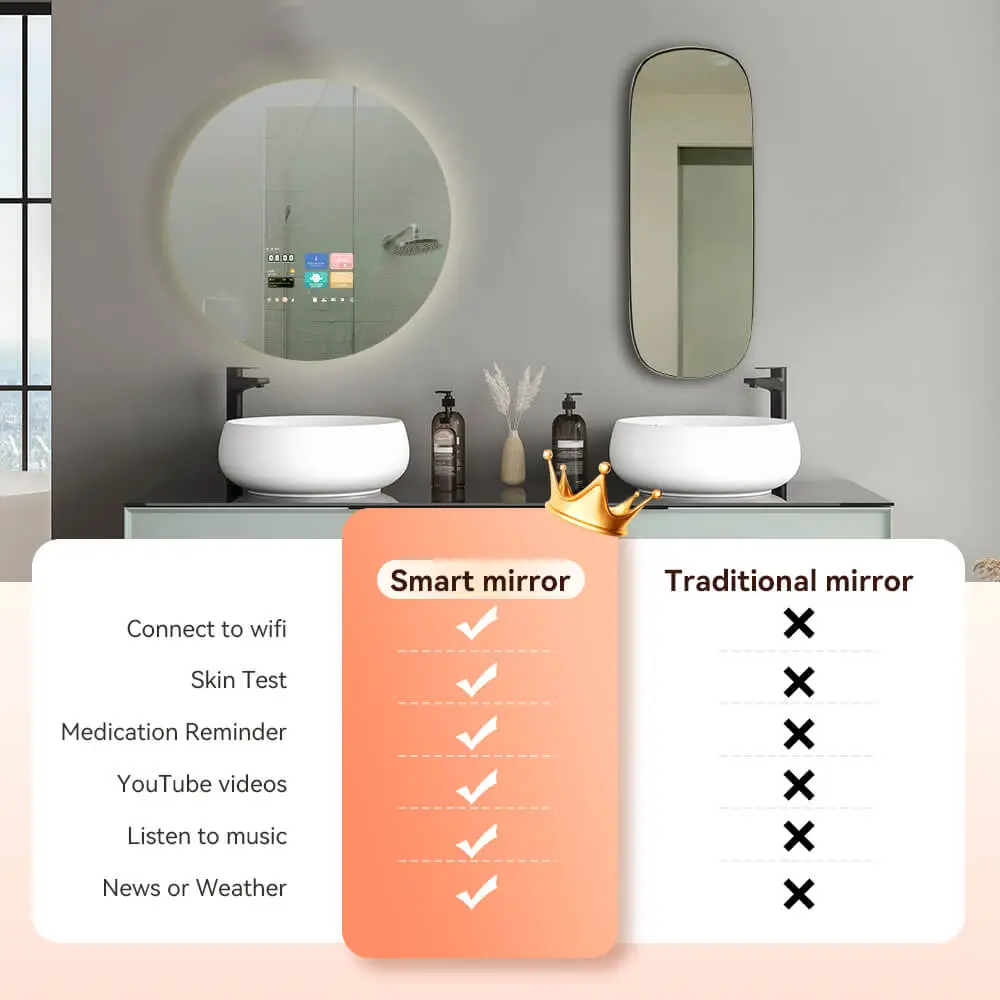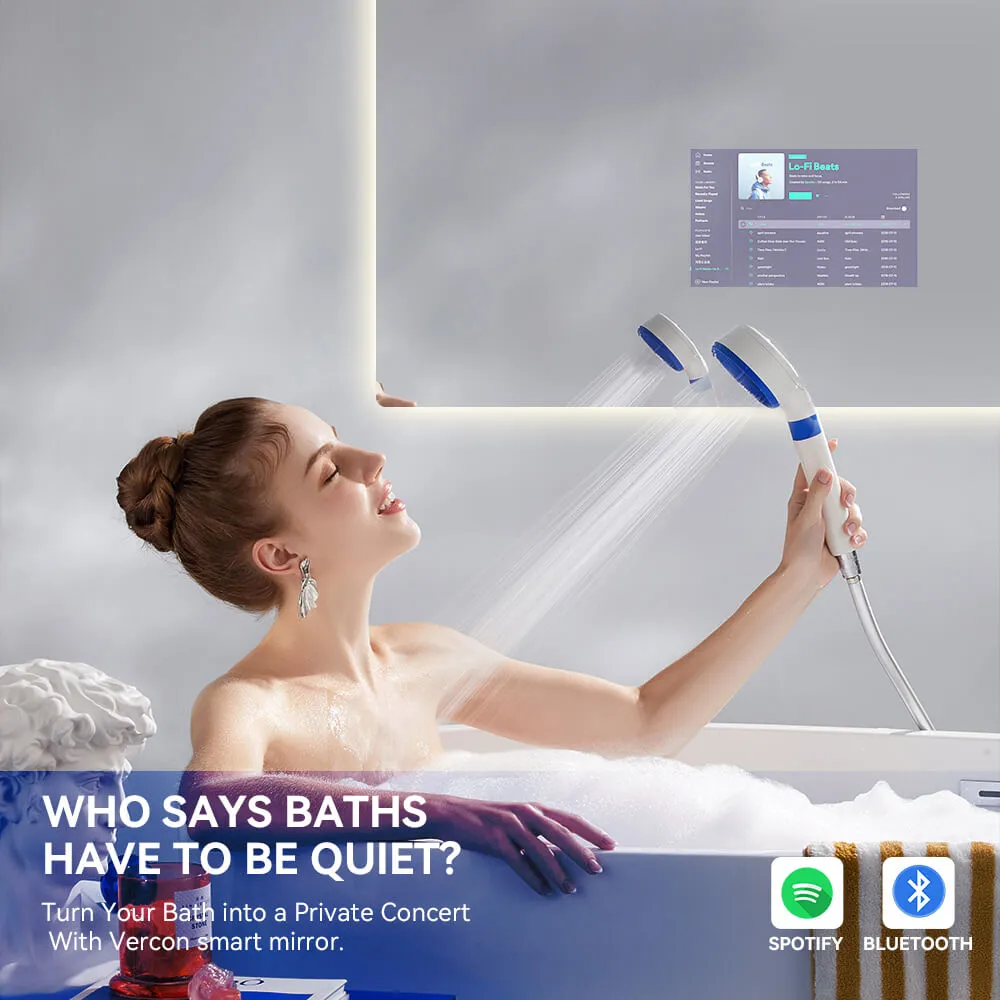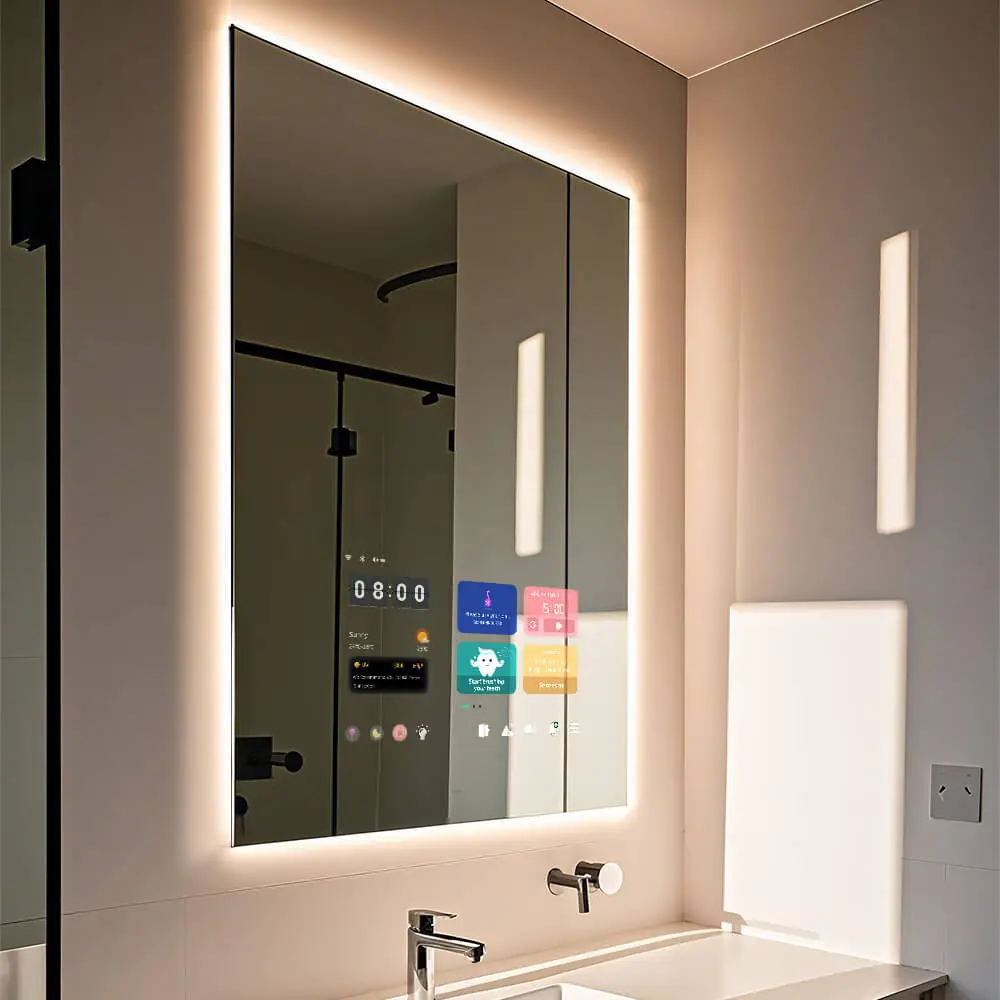Smart Mirror Link Integration: Connecting Apps and Devices
September 8, 2025
Table of Contents:
- Smart Mirror Link Integration APIs & Development
- REST vs WebSocket vs Event-Driven Architectures for Smart Mirror Link
- Best Practices for Smart Mirror Plugin and Module Development
- Smart Mirror Connectivity & Communication Protocols
- Smart Mirror Link Use Cases & Application Scenarios
- Smart Mirror Link Security, Privacy & Compliance
- Conclusion
- FAQ
Smart mirror link is a digital integration framework that allows smart mirrors to communicate with external devices, apps, and systems in real time. It combines hardware capabilities, software protocols, and connectivity standards to enable seamless interaction between mirrors and connected systems — whether in homes, hotels, fitness studios, or commercial buildings.

Smart Mirror Link Integration APIs & Development
Smart mirror APIs and SDKs (Software Development Kits) enable developers to link third-party apps and devices to smart mirror platforms through secure, standardized interfaces. These integration tools act as the backbone for data exchange and functionality embedding, allowing seamless control and display from external ecosystems.
Most modern smart mirrors offer a proprietary or open SDK that includes documentation, code libraries, and endpoint access. Developers can use these tools to build modules that synchronize data from apps like fitness trackers, calendars, or home control systems. A smart mirror SDK for developers may support various languages (JavaScript, Python, or Kotlin) and frameworks (React Native, Flutter).
| Method | Best For | Latency | Complexity | Example Use Case |
| REST API | Static data updates | Low | Low | Displaying weather data |
| WebSocket | Real-time updates | Very Low | Medium | Video calls or fitness sessions |
| Event-Driven | Reactive automation | Variable | High | Trigger-based lighting control |
MUES-TEC smart mirrors are designed for compatibility with a wide range of building control systems and digital applications. Their products support professional integration across real estate, hospitality, and commercial sectors.
Key Features of Smart Mirror SDKs
Smart mirror SDKs usually combine various technical components that support data handling, UI display, and hardware-level integration.
- Real-time data streaming mirror. Enables live content updates from connected devices.
- Mirror plugin architecture. Modular design simplifies adding or removing features.
- Developer integration mirror module. Prebuilt modules reduce time-to-market.
These features ensure that developers can create scalable and responsive experiences within a variety of digital environments, including both residential and enterprise installations.

REST vs WebSocket vs Event-Driven Architectures for Smart Mirror Link
REST APIs, WebSocket connections, and event-driven architectures are the primary communication methods for smart mirror integration, each serving different needs. REST is ideal for structured data calls; WebSocket is better for persistent, real-time interactions; event-driven models suit sensor-driven environments.
Understanding when and how to use each method allows integrators to balance system responsiveness with architecture simplicity.
Best Practices for Smart Mirror Plugin and Module Development
Smart mirror plugin development requires modularity, testing, and API compliance to ensure performance and compatibility. Plugins should follow consistent naming conventions, version controls, and be sandboxed to avoid system interference.
Development practices ensure stability across firmware updates and system versions.
- Use structured API calls and fallback mechanisms.
- Apply versioning to maintain developer integration mirror module consistency.
- Ensure mirror plugin architecture complies with the core firmware’s dependency model.
Choosing the right API model and maintaining modular, compliant plugin development workflows ensures smoother integrations, faster rollouts, and better long-term maintainability.

Smart Mirror Connectivity & Communication Protocols
The best communication protocol for smart mirror link integration depends on the desired application performance, power efficiency, and data volume. Options include Bluetooth, WiFi, MQTT, and WebSocket.
Bluetooth offers low power usage, suitable for short-range wearable integration. WiFi provides higher bandwidth and range, ideal for smart home hubs. MQTT protocol for mirror integration is useful in IoT setups needing lightweight messaging. WebSocket enables low-latency two-way communication.
Protocol Comparison for Smart Mirror Link: Bluetooth, WiFi, MQTT, WebSocket
| Protocol | Bandwidth | Power Use | Range | Ideal For |
| Bluetooth | Low | Very Low | Short | Fitness trackers |
| WiFi | High | Medium | Long | Streaming content |
| MQTT | Low | Low | Medium | Home automation |
| WebSocket | High | Medium | Medium | Live camera feed |
Managing Multi-Protocol Support in Smart Mirror Link Systems
Smart mirrors often support multi-protocol environments to handle diverse device types and use cases. For example, a BLE mesh for mirror network may pair with WiFi for app sync and MQTT for automation triggers.
Multi-protocol considerations:
- Signal interference across bands.
- Sync delays from protocol handshakes.
- Authentication coordination among stacks.
Optimizing Latency, Bandwidth, and Resilience in Smart Mirror Link
Protocol selection impacts latency, bandwidth needs, and fault tolerance in smart mirror communication. Use QoS mirror communication strategies for MQTT, and reconnect logic in WebSocket to avoid session drops.
To conclude, protocol flexibility and network optimization are critical for reliable and adaptive smart mirror performance in connected environments.

Smart Mirror Link Use Cases & Application Scenarios
The most valuable smart mirror integrations include fitness tracking, home automation, AR-enhanced beauty tools, and productivity dashboards. Each enhances the user experience through real-time interactivity and personalized content.
Fitness & Health App Integration via Smart Mirror Link
Smart mirrors connect to devices like Fitbit, Garmin, or Apple Health to deliver live health metrics and guided workouts. The mirror displays your real-time heart rate, workout time, or calories burned.
Features include:
- Display health metrics on mirror with biometric sensor syncing.
- Posture analysis using computer vision.
- Integration with fitness apps for performance tracking.
MUES-TEC mirrors are commonly deployed in wellness environments such as spas, clinics, and fitness centers, supporting health-oriented content through customized interfaces.
Smart Mirror Link in Beauty & AR Skincare Applications
Augmented reality overlays transform smart mirrors into virtual beauty consultants. Using depth sensors and AI, the mirror suggests skin care routines, detects blemishes, or applies virtual makeup.
Capabilities:
- Skin analysis using spectral imaging.
- Beauty app integration mirror with cosmetic databases.
- Smart mirror AR overlay app simulating products before purchase.
Smart Mirror Link for Home Automation Control
Smart mirrors act as command hubs for lighting, HVAC, and appliance control via voice or touch interfaces. Integration with platforms like HomeKit or Google Home creates a seamless environment.
Examples:
- One-touch control of smart thermostats.
- Trigger-based lighting via mirror home automation control.
- Real-time IoT sensor data display.
Notifications, Voice Assistants, Calendars with Smart Mirror Link
Smart mirrors connect with voice assistants and productivity apps to deliver notifications, calendar reminders, and traffic updates. Compatible with Google Assistant, Siri, or Alexa.
Key integrations:
- Calendar notifications on smart mirror.
- Email and messaging alerts.
- Voice-controlled reminders and tasks.
Ultimately, real-world use cases show how smart mirrors can move beyond passive displays into becoming interactive, service-oriented digital touchpoints.

Smart Mirror Link Security, Privacy & Compliance
Data privacy and cybersecurity are essential for smart mirror integrations, especially when handling sensitive health or biometric data. Encryption, secure authentication, and regulatory compliance are fundamental.
Encryption, Secure Channels, and TLS for Smart Mirror Link
Data should be transmitted using modern encryption protocols such as TLS 1.3 or AES-256.
Practices include:
- Smart mirror data encryption TLS standard adoption.
- End-to-end encrypted messaging.
- Secure local storage with sandboxing.
Authentication & Authorization Models for Smart Mirror Link
OAuth 2.0 and JWT tokens are widely used for authorizing device and app access.
Security features:
- OAuth integration mirror app for delegated access.
- User role-based permissions.
- Multi-factor authentication for admin access.
Smart Mirror Link Compliance with GDPR and Industry Standards
Smart mirrors deployed in hospitality or healthcare must comply with GDPR, HIPAA, or regional data laws.
Compliance checklist:
- GDPR on smart mirror installations for EU markets.
- HIPAA data separation for health use cases.
- Consent logging and anonymization.
Smart mirror link security must balance innovation with data protection and legal responsibility.
Conclusion
Smart mirror link integration is no longer a futuristic concept — it’s a practical requirement in modern digital environments. From fitness studios to luxury hotels, the ability to connect apps and devices to an interactive mirror platform transforms both user experience and operational efficiency.
As shown throughout this guide, technical integration involves choosing the right communication protocols, ensuring secure and compliant data exchange, and deploying on scalable infrastructure — whether on the edge or in the cloud. With flexible architectures and thoughtful design, smart mirrors become more than just reflective surfaces; they evolve into dynamic digital interfaces.
MUES-TEC, with its commitment to engineering precision and sector-specific smart mirror solutions, exemplifies how professional-grade technology can support innovation across commercial and residential markets.
Companies and developers aiming to implement smart mirror connectivity should prioritize modular development, multi-protocol support, and regulatory compliance. This ensures long-term usability and minimizes integration friction across evolving platforms and services.
FAQ
How do smart mirrors connect to external apps?
Through APIs and SDKs that allow two-way communication between the mirror and third-party apps, often using REST or WebSocket protocols.
Can smart mirrors work without internet access?
Yes, edge computing allows basic functionality like displaying pre-loaded data and offline device control using local protocols.
Are smart mirror integrations secure?
Most use TLS encryption, OAuth for authentication, and comply with GDPR or HIPAA depending on deployment region.
How expensive is it to integrate an app with a smart mirror?
Costs depend on the SDK provider, project scope, and required infrastructure, and should be assessed on a case-by-case basis.
What apps can be linked to smart mirrors?
Fitness, health, beauty, smart home, calendar, and voice assistant apps are commonly integrated.
Can smart mirrors be customized by developers?
Yes, many platforms provide modular SDKs, plugin APIs, and UI frameworks for full customization.
Do smart mirrors support voice commands?
Yes, most support integration with assistants like Alexa, Siri, or Google Assistant.
Recent articles
September 26, 2025
Touchscreen Mirror Applications: From Bathrooms to Retail SpacesSeptember 19, 2025
Digital Mirrors: Technology, Features, and ApplicationsSeptember 8, 2025
Smart Mirror Link Integration: Connecting Apps and Devices